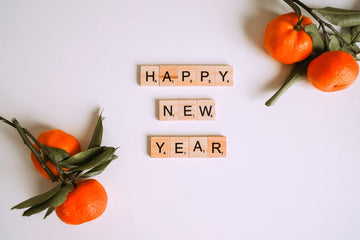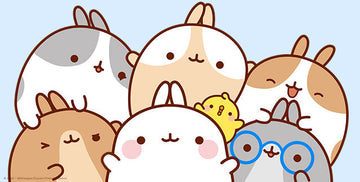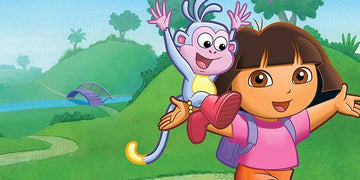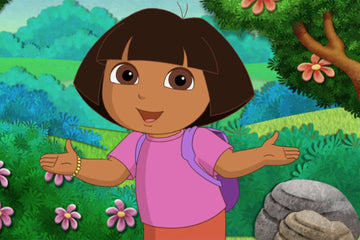New Year's Eve is a special time for families around the world, marked by unique traditions that reflect cultural diversity. Teaching kids about these global customs not only creates fun family moments but also fosters respect and appreciation for different cultures. From fireworks in Mexico to feasting on grapes in Spain, each tradition offers a glimpse into the values and hopes of various societies.
Engaging children in these customs can turn a simple celebration into an educational experience. They can learn about how different countries welcome the new year, celebrating with food, music, and rituals that have been passed down through generations. Exploring these customs helps kids understand and appreciate the world beyond their own experiences.
By sharing stories and activities related to New Year’s Eve traditions globally, families can broaden their horizons and strengthen their bonds. Discovering these vibrant customs is an excellent way to enrich children's understanding of community and tradition, making the New Year a time of learning as well as celebration.
Historical Origins of New Year's Eve
The history of New Year's Eve is rich with ancient customs and the development of various calendar systems. Many cultures created unique celebrations to mark the transition from one year to the next, often filled with symbolism and ritual.
Ancient Celebrations and Symbolism
Ancient civilizations had unique ways to celebrate the New Year. For example, the Egyptians honored the flooding of the Nile, which symbolized rebirth and renewal. This event coincided with the rise of the Sirius star and was celebrated with festivals.
In Babylon, the Akitu Festival marked the first spring month, involving rituals to ensure the fertility of the land. Different cultures used ceremonies to ward off evil and bring luck for the upcoming year.
In Japan, traditions include Joya No Kane, where bells are rung 108 times to represent human desires. This act aims to purify minds for the new year. Such customs show how ancient peoples valued the concept of time and change.
Development of Calendar Systems
As societies evolved, so did their ways of tracking time. The Gregorian calendar, introduced by Pope Gregory XIII in 1582, changed how many cultures celebrated the New Year. It established January 1 as the start of the year.
Before this, various cultures used lunar or solar calendars. The Julian calendar, formulated by Julius Caesar, was one such system, shifting New Year's Day to January.
Celebrations now include familiar songs like "Auld Lang Syne," which traces back to Scotland. This song reflects the theme of remembering the past while looking forward.
Overall, the transition to modern New Year celebrations involved adapting ancient traditions to current customs, ensuring history remains alive in today's festivities.
Celebrations Around the Globe
Different cultures have unique ways to celebrate the New Year. From lively parties to family traditions, each region brings its customs to life. This section highlights diverse festivities across Europe, Latin America, and Asia.
Europe's Diverse Festivities
In Europe, New Year's Eve is filled with vibrant celebrations. In Scotland, Hogmanay is a major event starting from December 30. Families and friends gather to enjoy parties, and the tradition of “first footing” involves the first visitor bringing good luck.
In Spain, it's customary to eat twelve grapes at midnight, one for each stroke of the clock, symbolizing good luck for the coming months. Many regions also celebrate with fireworks and public concerts that attract large crowds. The atmosphere is festive, with people wearing special outfits, often in festive colors.
Latin American Vibrant Traditions
Latin America has colorful and lively New Year's traditions. In Mexico, people celebrate with fireworks, music, and food. Families gather for a large feast, often including tamales and other traditional dishes.
In Ecuador, there is a unique custom of burning “Año Viejo,” which involves creating a life-sized doll representing the old year. People fill it with old clothing and fireworks and set it ablaze at midnight. In Brazil, many dress in white for peace and jump over waves at the beach to honor the sea goddess. These traditions focus on family and hope for a prosperous year ahead.
Asian Rich Customs
In Asian cultures, the New Year is often a time for family reunions and rich traditions. For example, in Japan, Shōgatsu marks a period of celebration that lasts from January 1-3. Families prepare special foods like mochi and osechi-ryori, a colorful meal filled with symbolism.
The Lunar New Year is another significant celebration in many Asian countries. In China, families gather for large dinners on New Year's Eve and exchange red envelopes with money for luck. People also honor ancestors and decorate homes with red lanterns and banners. Each custom brings families together, emphasizing renewal and hope for the future.
Symbolic Foods and Rituals for Prosperity
Different cultures celebrate New Year’s Eve with special foods that symbolize good fortune and prosperity. These foods often have deep meanings and rituals that families enjoy together.
Grapes, Pomegranates, and Noodles
In Spain, eating 12 grapes at midnight is a popular tradition. Each grape represents a month of the year. As the clock strikes twelve, people eat one grape per chime, hoping to bring luck for each month ahead.
Pomegranates are also a symbol of prosperity in many cultures. In some Middle Eastern countries, breaking open a pomegranate at New Year brings abundance. The many seeds represent wealth and fertility.
Soba noodles are eaten in Japan as part of the Ozoni soup. The long noodles signify a wish for a long and healthy life. Families share this dish to welcome the New Year together.
Cakes, Sweets, and Coins
Various countries enjoy unique cakes and sweets during their New Year celebrations. In Greece, the Vasilopita is a sweet bread served with a coin hidden inside. Whoever finds the coin is believed to have good luck for the year.
In the Netherlands, Oliebollen are deep-fried dough balls enjoyed on New Year’s Eve. Eating these treats is thought to bring prosperity, as they are round like coins.
Celebrating with these foods not only honors traditions but also brings families together. Each item carries hopes for health, success, and happiness in the new year.
Unique Customs and Performance
Different cultures celebrate New Year's Eve with unique customs and performances. These traditions often reflect local beliefs and history, making each celebration special.
First-Footing and Firework Displays
In Scotland, the tradition of First-Footing is very important. This custom involves being the first person to enter a home after midnight. It is thought that the first visitor should bring good luck. Typically, the First-Footer presents gifts like coal or whisky.
Fireworks are another common sight. Cities around the world, such as Sydney and London, host spectacular firework displays. These shows create a festive atmosphere as people gather to welcome the New Year with joy and excitement.
Water Rituals and Animal Symbols
In Brazil, many people celebrate by jumping seven waves at the beach. They do this to honor Yemoja, the goddess of the sea. Each wave represents a wish for the New Year, and people often offer flowers to the sea.
Animal symbols also play a significant role. In Chinese culture, Lion and Dragon Dances are performed to bring good fortune. These colorful and lively dances are believed to chase away evil spirits, ensuring the upcoming year is filled with prosperity.
Another unique custom involves wearing red underwear for good luck in Italy. Some people also hang onions on their doors as a way to bring wealth in the New Year. These diverse customs highlight the rich traditions from around the world.
Family Gatherings and Public Events
During New Year’s Eve, families and communities celebrate in various ways. Home traditions often bring families together, while public events offer a chance for larger gatherings and festive experiences.

Home Traditions and the Circle of Life
Home traditions are central to many families as they gather to celebrate New Year’s Eve. In Chinese culture, the Spring Festival is a time for family reunions. Families enjoy a feast that includes dishes like fish for prosperity and dumplings for wealth.
In Mexico, families prepare a dish called Rosca de Reyes, a sweet bread that honors the Three Kings. This treat is shared, symbolizing unity and continuity within the family.
In Asian cultures, giving Hong Bao, or red envelopes filled with money, is a way to wish good fortune for the upcoming year. These traditions create a feeling of togetherness and celebrate the circle of life, as family stories and values are passed down through generations.
Community Celebrations and Countdowns
Public events are a vibrant part of New Year’s celebrations across the globe. In many cities, crowds gather for big countdowns, fireworks, and street parties.
In South Korea, the Bonguhyang ceremony features traditional performances that connect people to their heritage.
In Russia, celebrations at Lake Baikal draw crowds who appreciate nature while honoring cultural customs. Large public gatherings foster community spirit, as friends and strangers celebrate together.
Many cities also hold parades or concerts leading up to midnight. These events create excitement and anticipation, making New Year’s Eve a memorable occasion for everyone involved.





